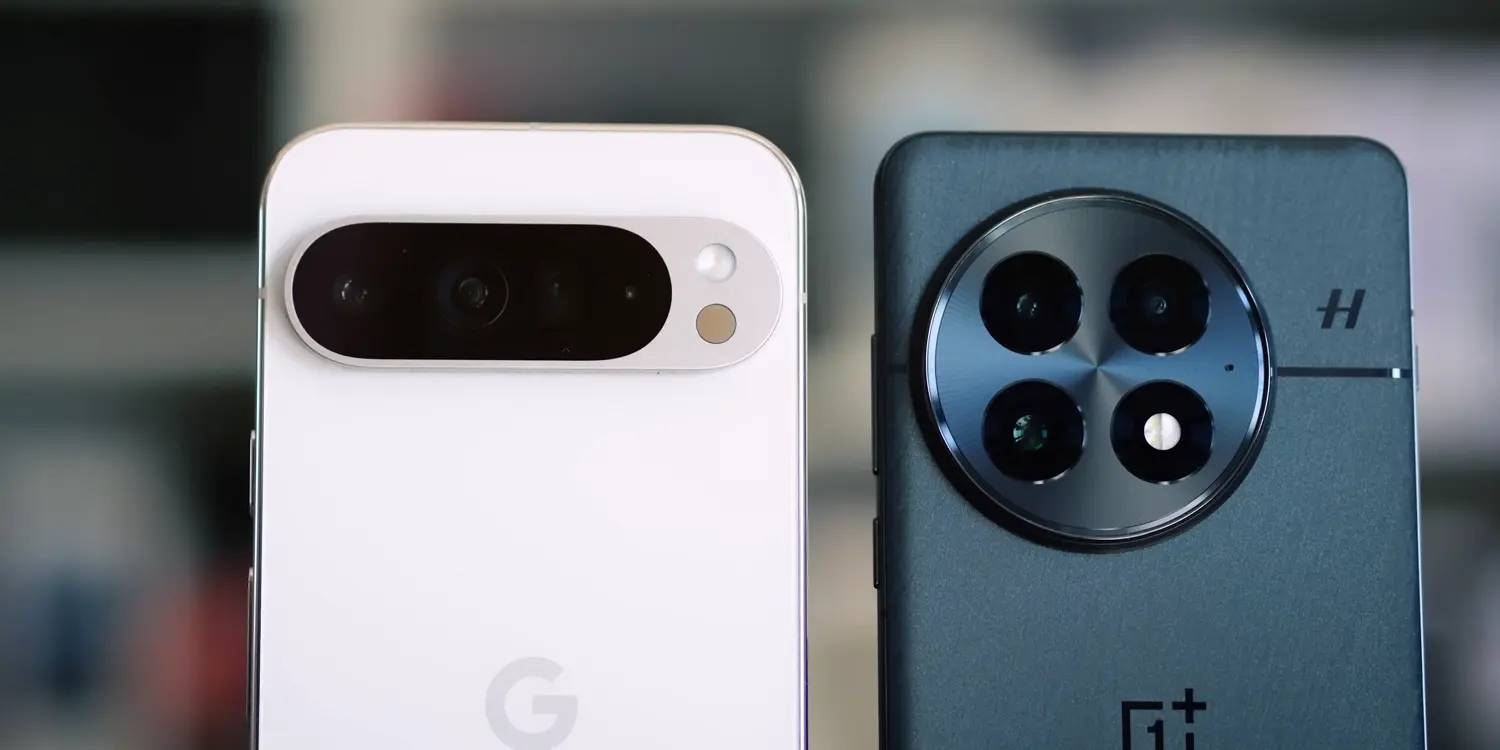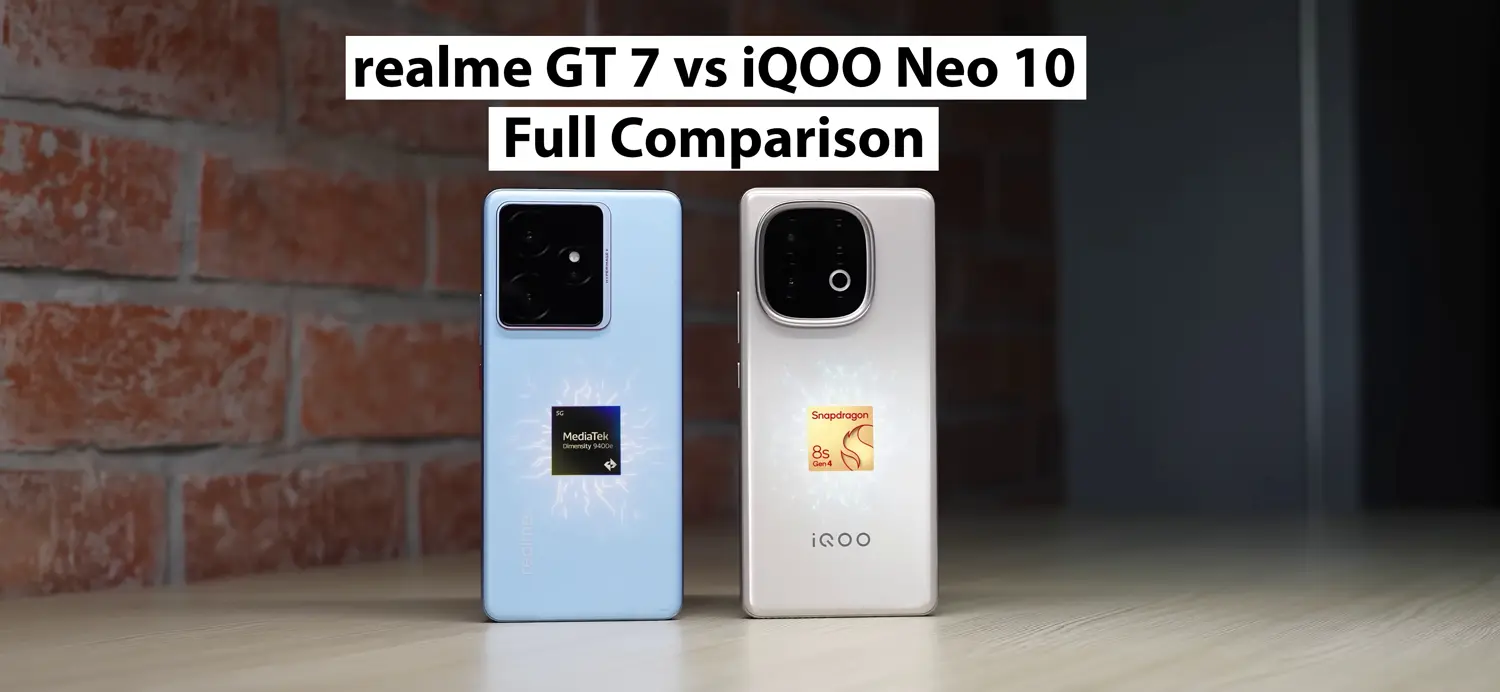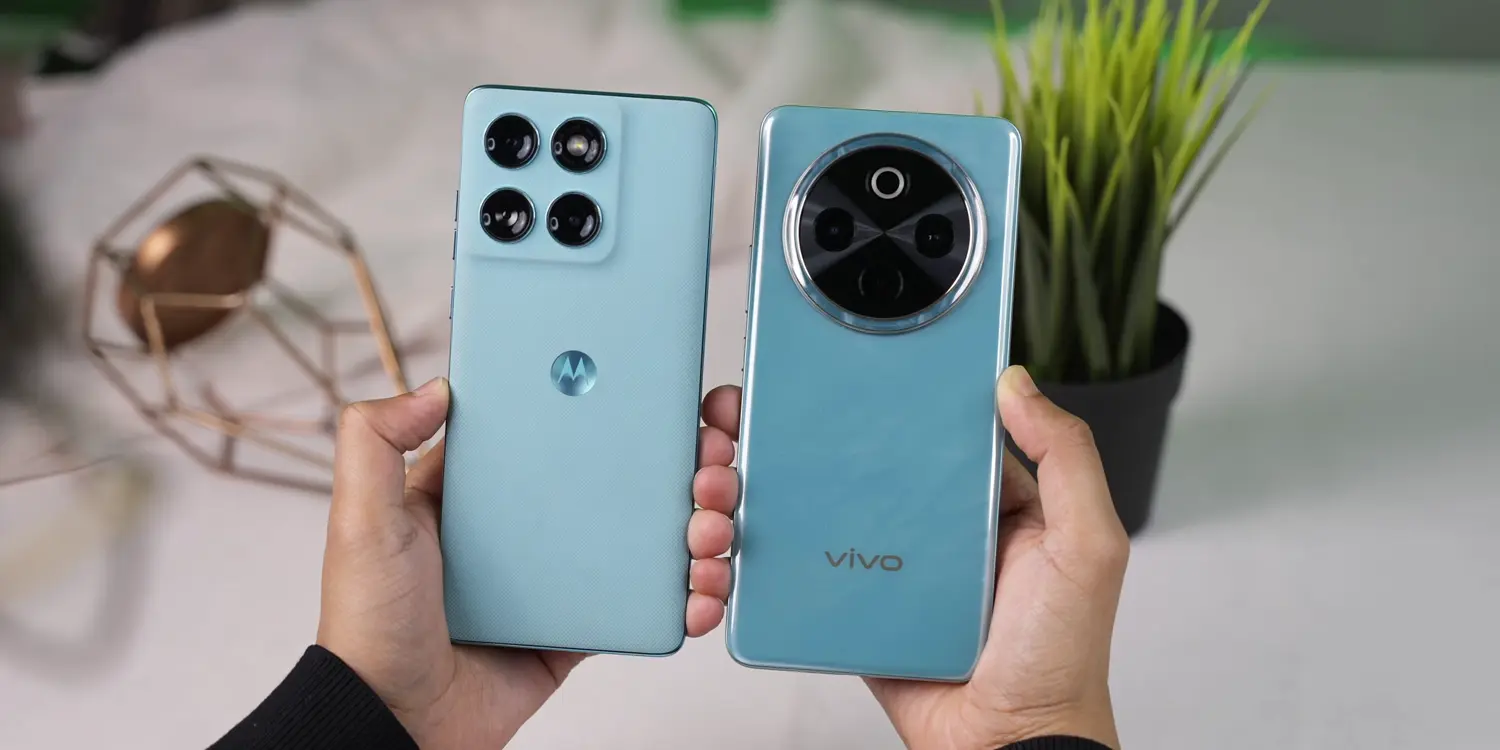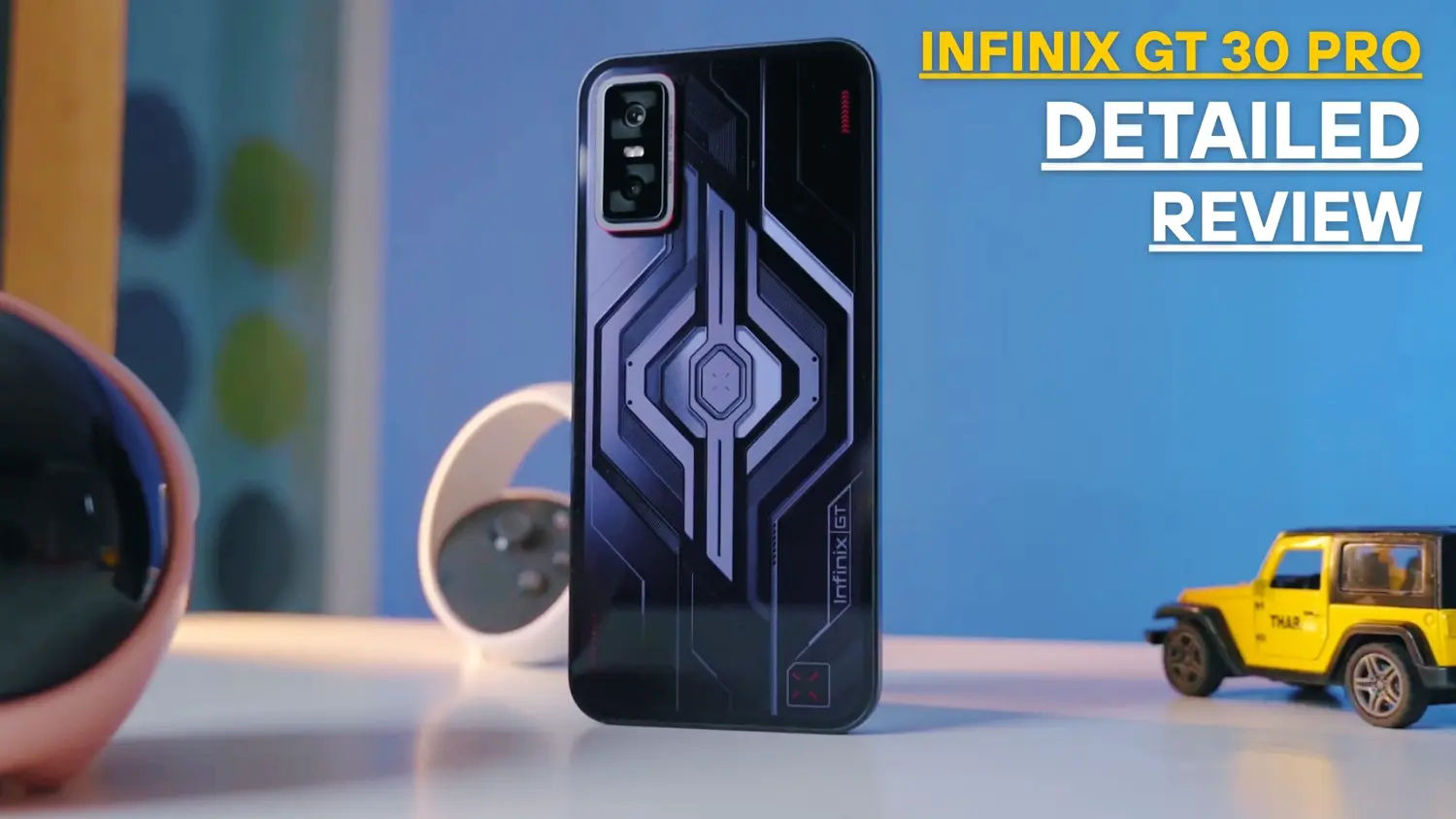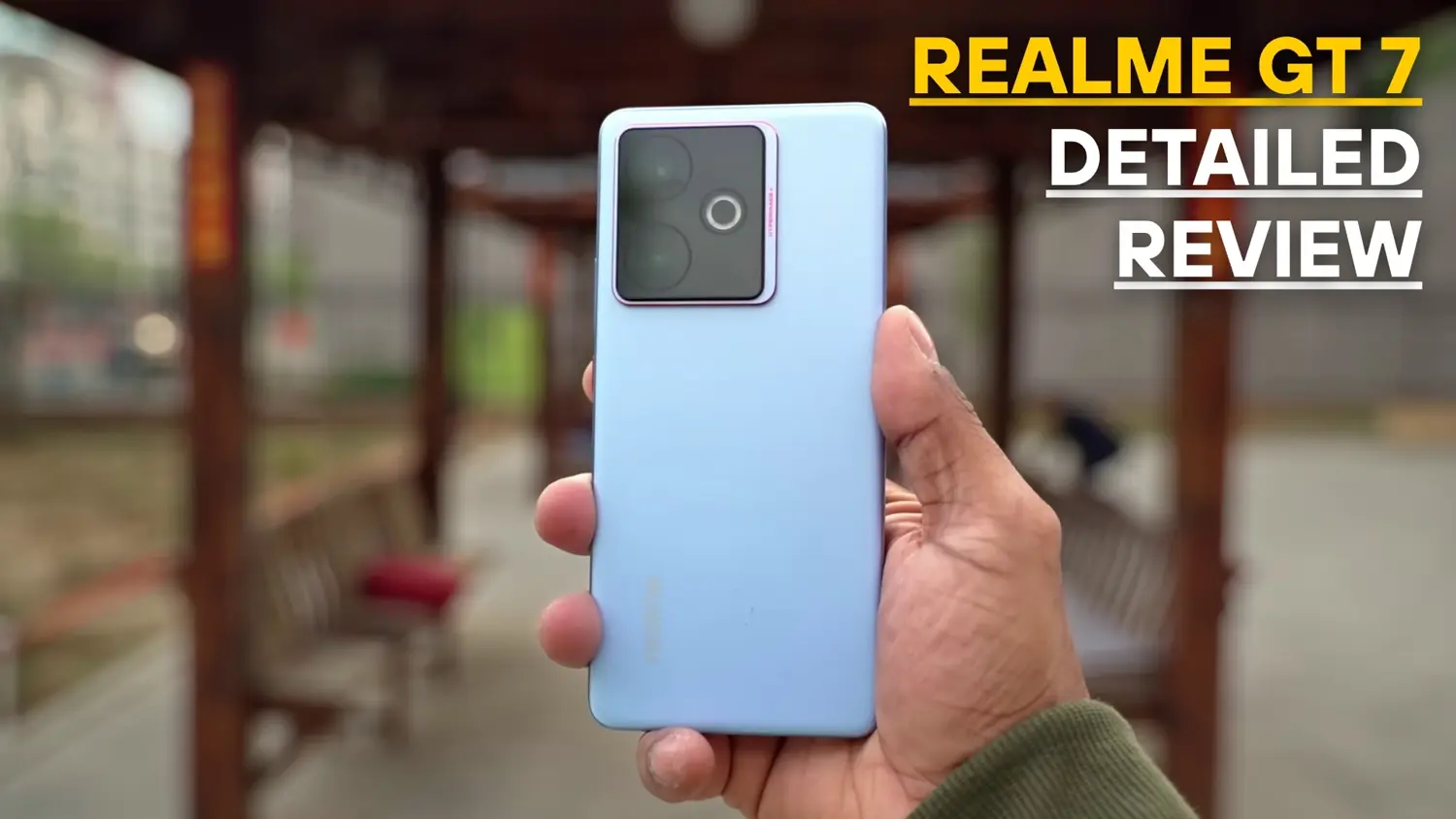Smartphones have become an essential part of our lives, and choosing the right one can be tricky, especially when you’re on a budget. Google recently launched the Pixel 9a, a budget-friendly version of its flagship Pixel 9 series, priced at $499 (approximately ₹42,000). Apple, on the other hand, introduced the iPhone 16e, positioned as an affordable alternative to the iPhone 16, starting at $599 (approximately ₹50,400). Both phones aim to deliver flagship-like features at a lower price, but which one gives you more bang for your buck? In this article, we’ll compare the Google Pixel 9a and Apple iPhone 16e in terms of design, display, camera, performance, AI features, battery life, and more to help you decide which is worth buying.
Design and Build: Sleek, Minimal, and Modern
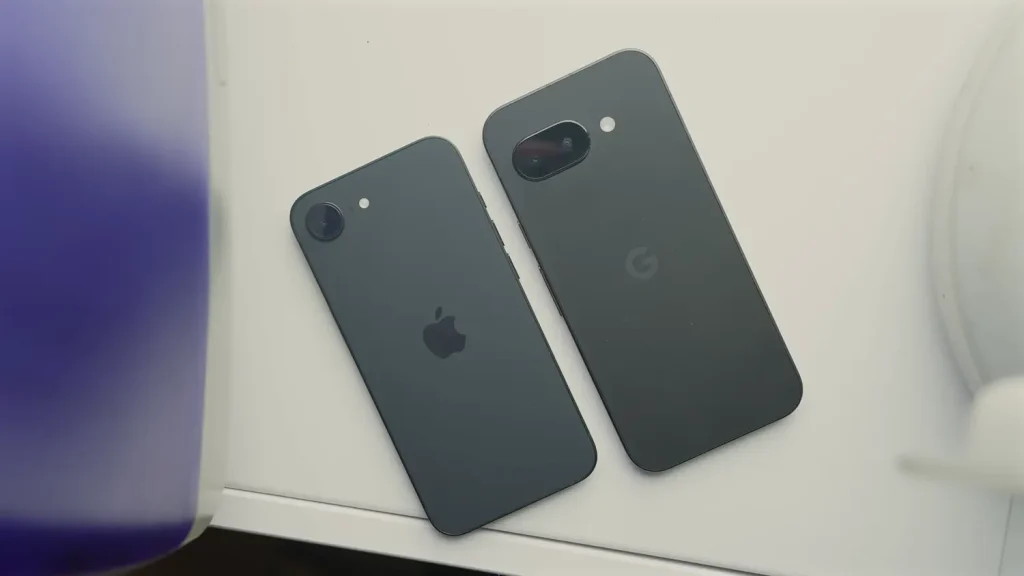
Both the Pixel 9a and iPhone 16e sport a clean, minimal design that looks premium despite their budget-friendly price tags. They share similarities like flat aluminum frames, matte backs, and cameras positioned in the top-left corner. However, there are some key differences that set them apart.
The Pixel 9a has a plastic back that feels surprisingly close to the frosted glass on the iPhone 16e. You’d hardly notice the difference unless you’re told it’s plastic. Google has done an excellent job making the Pixel 9a feel premium. One standout feature is the nearly flush camera module on the Pixel 9a, which ensures the phone lies flat without wobbling—a small but practical advantage over the iPhone 16e, which has a slight camera bump.
The Pixel 9a is slightly larger, measuring 154.7 x 73.3 x 8.9 mm and weighing 185.9 g, compared to the iPhone 16e’s more compact 146.7 x 71.5 x 7.8 mm and 167 g. The iPhone 16e feels lighter and easier to hold for long periods, which is great for users who prefer smaller phones. Both phones are IP68-rated for dust and water resistance, ensuring durability.
Color options add some personality to the Pixel 9a, with choices like Iris (lavender), Obsidian (black), Peony (pink-ish), and Porcelain. The iPhone 16e, however, is limited to just black and white, which feels a bit dull in comparison. For design, the Pixel 9a takes the lead with its flush camera, vibrant colors, and premium-feeling plastic back.
Display: Pixel’s Smoothness vs iPhone’s Sharpness
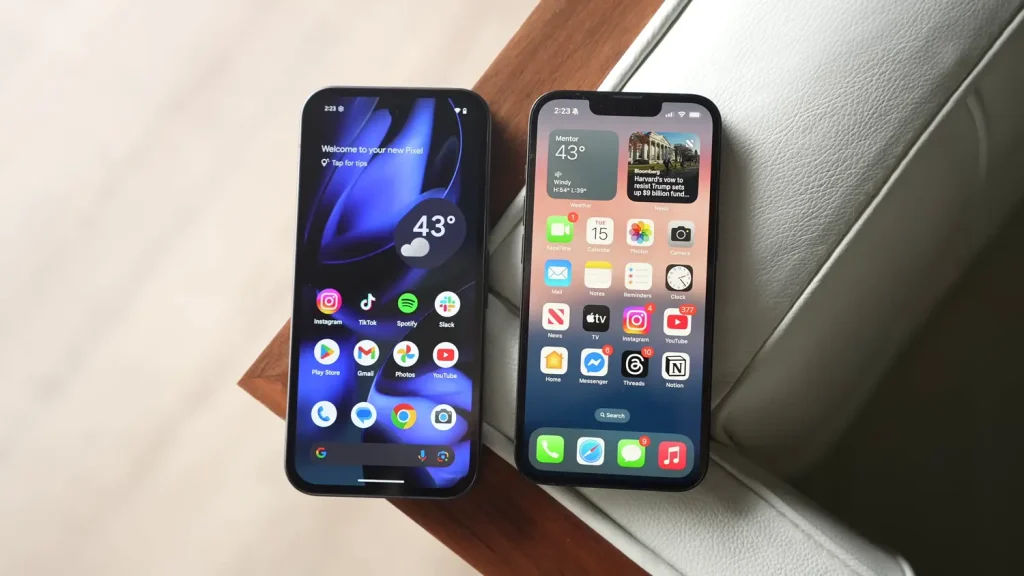
The display is a critical factor when choosing a smartphone, and both phones deliver solid OLED panels, but they cater to different preferences. The Pixel 9a features a 6.3-inch pOLED display with a resolution of 2424 x 1080 pixels, a variable refresh rate of 60-120Hz, and a peak brightness of 2700 nits (1800 nits typical). The iPhone 16e, on the other hand, has a slightly smaller 6.1-inch Super Retina XDR OLED display with a resolution of 2532 x 1170 pixels, a fixed 60Hz refresh rate, and a peak brightness of 1200 nits (800 nits HDR).
The Pixel 9a’s larger screen, higher refresh rate, and brighter display make it ideal for outdoor use and smooth scrolling, especially when gaming or browsing social media. The 120Hz refresh rate is a premium feature you’d typically find on Pro iPhones, making the Pixel 9a feel more modern. It also supports an always-on display, another feature absent on the iPhone 16e.
However, the iPhone 16e’s display has thinner bezels and a slightly higher resolution, resulting in sharper text and more vibrant colors. The bezels on both phones are noticeable, but the iPhone’s are less chunky. The iPhone 16e also uses Apple’s Ceramic Shield glass for added durability, while the Pixel 9a relies on Corning Gorilla Glass 3.
For most users, the Pixel 9a’s display wins due to its smoothness and brightness, but if you prioritize sharpness and color accuracy, the iPhone 16e holds its own.
Camera: Versatility vs Video Prowess

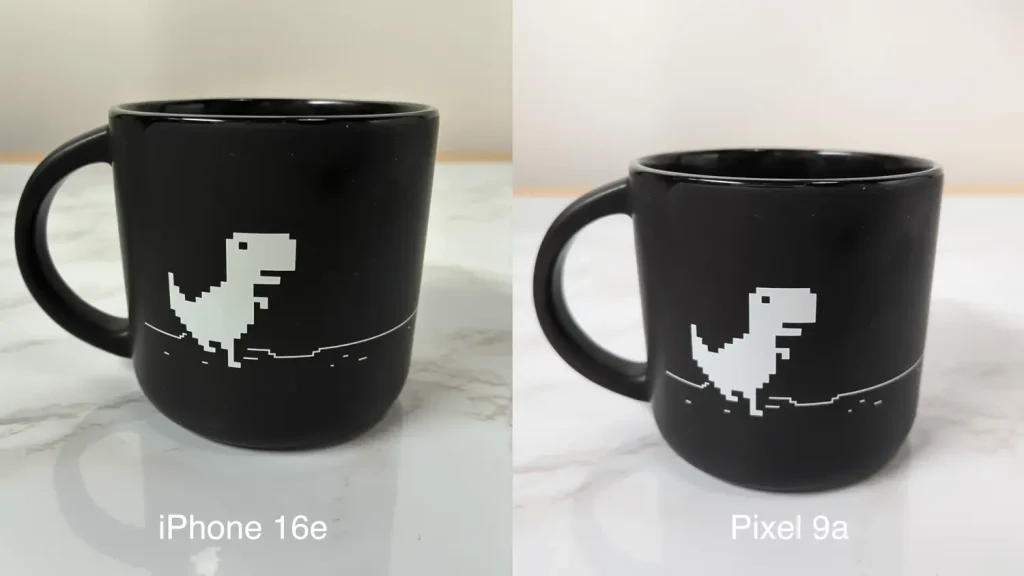
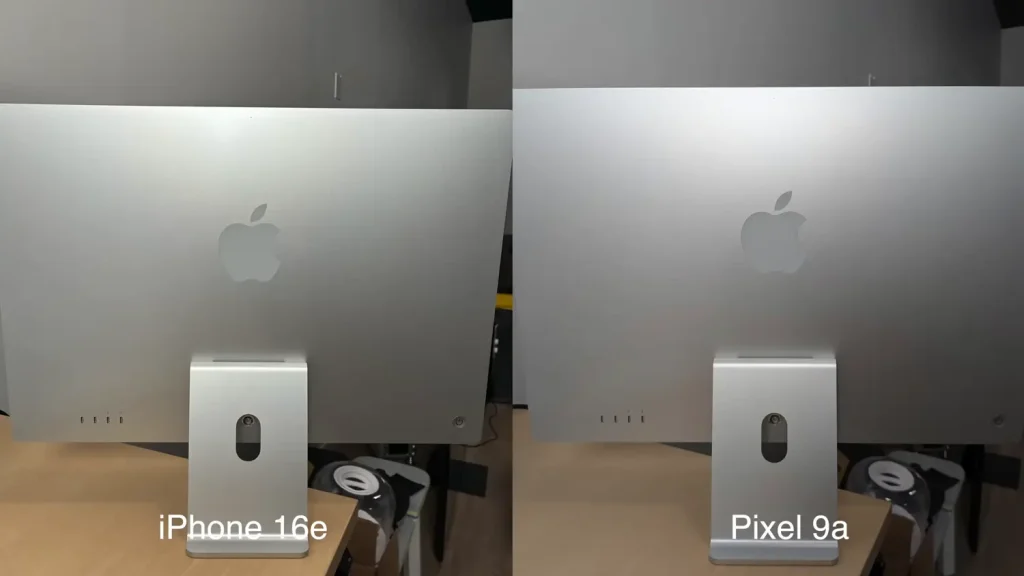
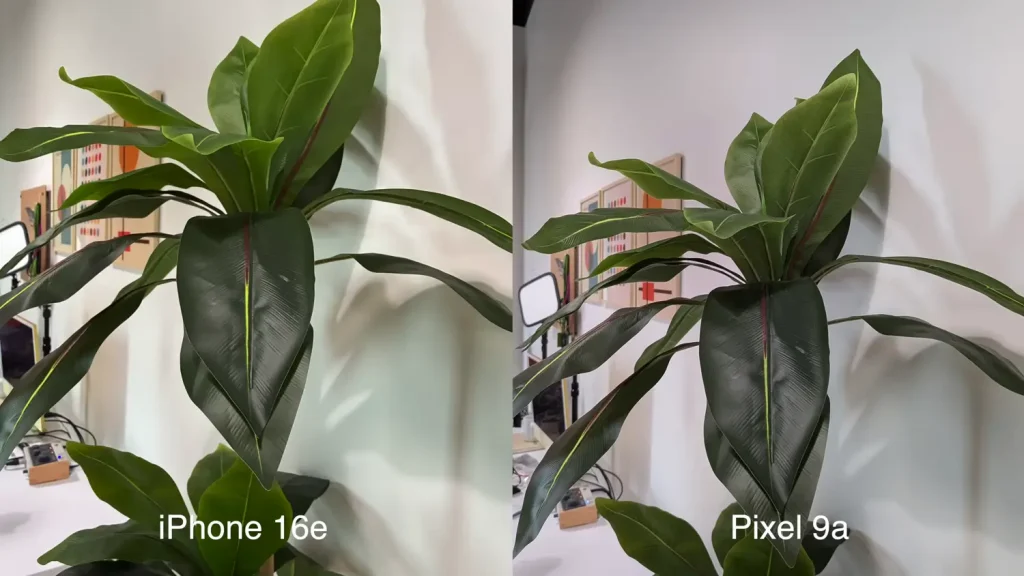
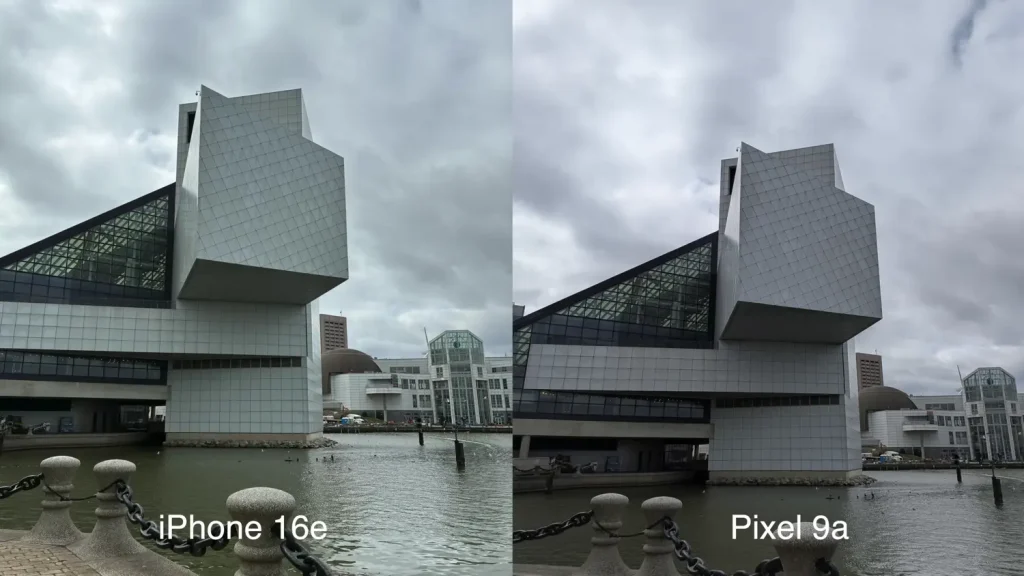
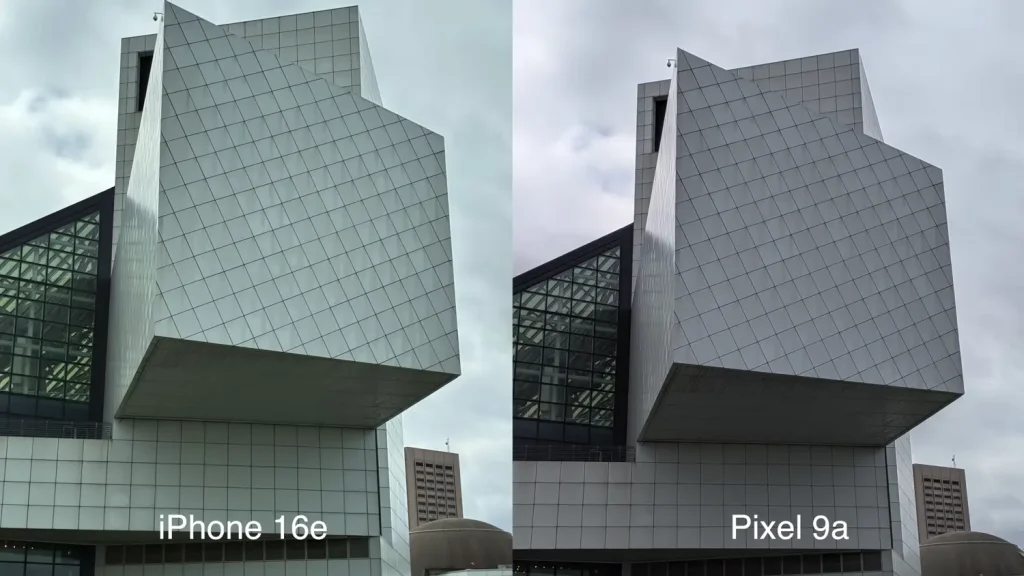

Cameras are a big deal for budget smartphones, and both the Pixel 9a and iPhone 16e deliver impressive results for their price. The Pixel 9a boasts a dual-camera setup with a 48MP main sensor and a 13MP ultrawide lens, along with a 13MP front camera. The iPhone 16e, however, sticks to a single 48MP Fusion Camera that doubles as a 2x telephoto lens, paired with a 12MP front camera.
In daylight, both phones capture great photos with their 48MP sensors, but they have distinct styles. The Pixel 9a produces cooler, more natural tones, while the iPhone 16e leans toward warmer, saturated colors. The Pixel’s ultrawide lens adds versatility, making it better for landscapes, group shots, and indoor photography. It also supports macro photography, allowing detailed close-up shots, which the iPhone 16e lacks.
Portrait mode is where the Pixel 9a shines. It offers better depth of field and can take portraits of any subject, including inanimate objects. The iPhone 16e restricts portraits to people only, and its blur effect can sometimes look unnatural. In low-light conditions, both phones perform well, but the Pixel 9a’s AI-driven processing gives it an edge in capturing details in shadows.
For video, the iPhone 16e takes the lead with superior stabilization and support for 4K Dolby Vision, making it ideal for vloggers or anyone who records videos frequently. The Pixel 9a, unfortunately, lacks video boost features found on its flagship siblings, so its video quality doesn’t match the iPhone’s.
If you’re into photography and want versatility, the Pixel 9a is the better choice. For video recording, the iPhone 16e is unbeatable.
Performance: Power vs Efficiency

Both phones use custom chips designed by their respective companies. The Pixel 9a is powered by the Google Tensor G4 chip with 8GB of RAM, the same processor found in the flagship Pixel 9 series. The iPhone 16e runs on Apple’s A18 chip, also with 8GB of RAM, derived from the iPhone 16 but slightly toned down.
For everyday tasks like texting, browsing, and watching videos, both phones perform flawlessly with no lag or hiccups. However, the iPhone 16e’s A18 chip outperforms the Tensor G4 in benchmarks and is better suited for high-performance tasks like gaming. Some reviews note that the Pixel 9a struggles with demanding games, while the iPhone 16e handles them with ease.
Both phones come with modern software—Android 15 on the Pixel 9a and iOS 18.3.1 on the iPhone 16e. The Pixel 9a offers seven years of OS and security updates, ensuring support until 2032, while Apple typically provides five years, though it often extends beyond that. If longevity is a priority, the Pixel 9a has a slight edge.
AI Features: Google’s Lead in Innovation

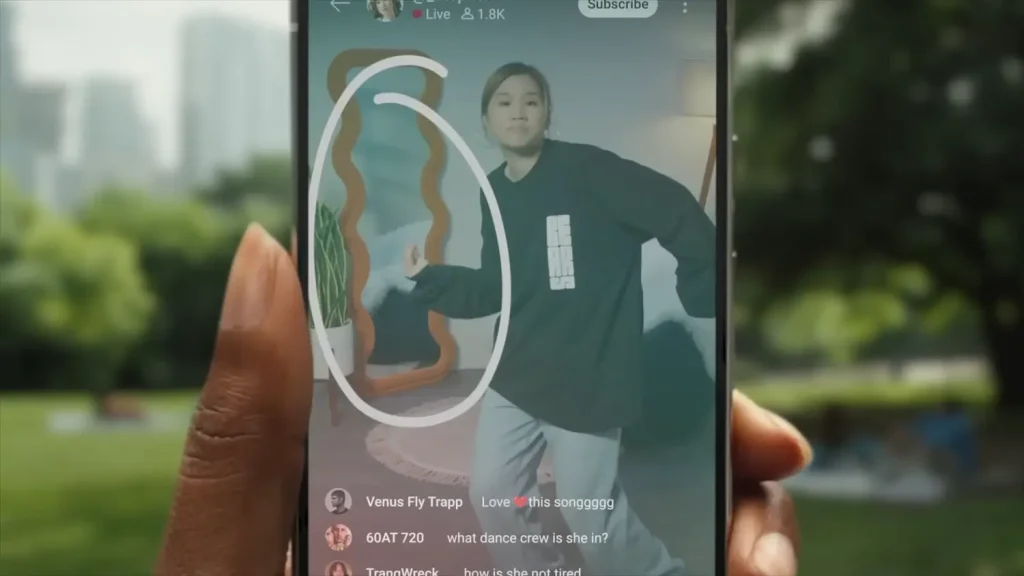
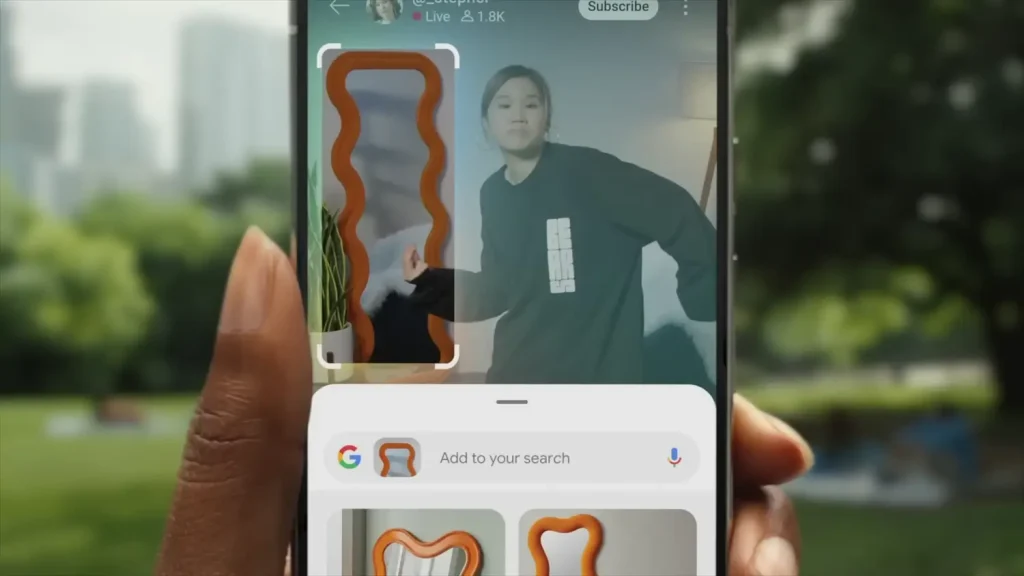
AI is a major selling point for both phones, but Google has a clear advantage. The Pixel 9a comes with Gemini AI, a powerful assistant that outperforms Apple’s Siri in responsiveness and versatility. Features like Circle to Search, Magic Editor, Best Take, and Add Me make photo editing fun and practical. For example, Magic Editor lets you remove or add elements to photos seamlessly, while Add Me merges photos to include the photographer in group shots.
The iPhone 16e supports Apple Intelligence, but its features, like Image Playground and Cleanup, are less refined. Siri lags behind Gemini, and some AI features promised at WWDC are still unavailable, especially in regions like India. While Apple Intelligence has potential, it feels like a work in progress compared to Google’s polished AI suite.
If you love experimenting with AI for photos, productivity, or assistance, the Pixel 9a is the way to go.
Battery Life and Charging: iPhone’s Efficiency vs Pixel’s Capacity
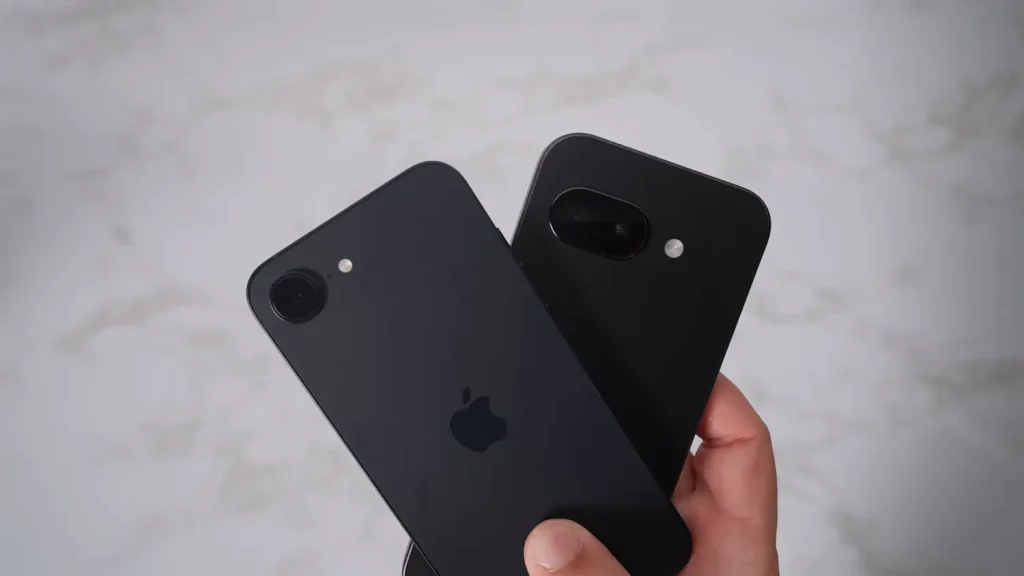
Battery life is a crucial factor, and both phones perform well, but they have different strengths. The Pixel 9a has a larger 5100mAh battery, while the iPhone 16e is estimated to have a 4005mAh battery (Apple doesn’t disclose official capacity). Despite the Pixel’s bigger battery, the iPhone 16e lasts longer, with tests showing up to 36 hours of usage compared to the Pixel’s 30 hours.
The Pixel 9a’s always-on display and 120Hz refresh rate consume more power, which explains the difference. If you disable these features, the Pixel’s battery life improves significantly. Both phones support fast charging, with the Pixel 9a at 23W wired and 7.5W wireless, and the iPhone 16e at 20W wired. However, neither includes a charger in the box, and the iPhone 16e lacks MagSafe or magnetic wireless charging, which is a letdown.
For battery life, the iPhone 16e is the winner, but the Pixel 9a offers more charging options.
Specification Table
| Feature | Google Pixel 9a | Apple iPhone 16e |
|---|---|---|
| Price | $499 (₹42,000) / $599 (₹50,400) for 256GB | $599 (₹50,400) / $699 (₹58,800) for 256GB / $899 (₹75,600) for 512GB |
| Display | 6.3-inch pOLED, 2424 x 1080, 120Hz, 2700 nits | 6.1-inch OLED, 2532 x 1170, 60Hz, 1200 nits |
| Processor | Google Tensor G4, 8GB RAM | Apple A18, 8GB RAM |
| Cameras | 48MP main + 13MP ultrawide, 13MP front | 48MP main (2x telephoto), 12MP front |
| Battery | 5100mAh, 23W wired, 7.5W wireless | ~4005mAh, 20W wired |
| Software | Android 15, 7 years of updates | iOS 18.3.1, ~5 years of updates |
| Weight | 185.9 g | 167 g |
| Dimensions | 154.7 x 73.3 x 8.9 mm | 146.7 x 71.5 x 7.8 mm |
| Colors | Iris, Obsidian, Peony, Porcelain | Black, White |
Should You Buy the Pixel 9a or iPhone 16e?

The Google Pixel 9a and Apple iPhone 16e are excellent budget smartphones, but they cater to different needs. The Pixel 9a is the better value at $499 (₹42,000), offering premium features like a 120Hz display, always-on display, dual cameras, and advanced AI tools. Its vibrant colors, flush camera design, and seven years of updates make it a compelling choice for Android users or those who want more for less.
The iPhone 16e, priced at $599 (₹50,400), excels in battery life, video recording, and raw performance, making it ideal for gamers and iOS loyalists. However, its single camera, 60Hz display, and limited AI features feel like compromises at this price.
If you’re platform-agnostic and want the most bang for your buck, the Pixel 9a is the clear winner. It delivers flagship-like features at a lower cost, making it one of the best budget phones of 2025. However, if you’re entrenched in Apple’s ecosystem or prioritize video quality and gaming, the iPhone 16e is worth considering.
Is It Worth It?
For Indian users, the Pixel 9a’s starting price of ₹49,999 (for 256GB) is a steal compared to the iPhone 16e’s ₹59,900 (for 128GB). The Pixel 9a offers more storage, a smoother display, and versatile cameras, making it a smarter investment for budget-conscious buyers. The iPhone 16e, while reliable, feels overpriced for what it offers, especially with its single camera and dated 60Hz display.
Ultimately, your choice depends on your priorities. If you value innovation, affordability, and photography, the Pixel 9a is hard to beat. If you’re an Apple fan or need a phone for gaming and video, the iPhone 16e is a safe bet. Weigh your needs, and you’ll find the right fit.

